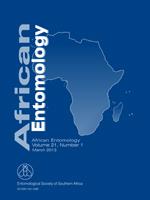The status of insecticide susceptibility of Anopheles arabiensis populations was monitored in northern and southern Ethiopia using one- to three-day-old mosquitoes reared from larval collections. Anopheles gambiae complex mosquitoes, identified by PCR as An. arabiensis, were exposed to diagnostic concentrations of DDT, malathion, fenitrothion, bendiocarb, propoxur and deltamethrin according to the standard WHO procedure. A heterogeneous and focal distribution of resistance phenotypes was observed in surveyed districts of the country. In Tach Armacho in northern Ethiopia, only resistance to DDT was detected. In the other two northern sites, An. arabiensis populations were susceptible to fenitrothion, resistant to malathion, propoxur and DDT and showed low levels of survival when exposed to bendiocarb requiring further investigations. In three areas of southern Ethiopia, An. arabiensis was susceptible to bendiocarb, propoxur and malathion, with low levels of survival on fenitrothion needing further confirmation. These samples were resistant to DDT and deltamethrin. Analyses for the knockdown resistant (kdr) mutations showed only the L1014F mutation was present with frequencies ranging from 68 to 100 %. The need for routine monitoring and surveillance as part of an insecticide resistance management programme is highlighted.
BioOne.org will be down briefly for maintenance on 17 December 2024 between 18:00-22:00 Pacific Time US. We apologize for any inconvenience.
How to translate text using browser tools
1 March 2013
Insecticide Resistance in Anopheles arabiensis from Ethiopia
M. Fettene,
D. Olana,
R.N. Christian,
L.L. Koekemoer,
M. Coetzee
ACCESS THE FULL ARTICLE
It is not available for individual sale.
This article is only available to subscribers.
It is not available for individual sale.
It is not available for individual sale.

African Entomology
Vol. 21 • No. 1
March 2013
Vol. 21 • No. 1
March 2013
Anopheles gambiae complex
kdr
knockdown resistance
susceptibility tests





